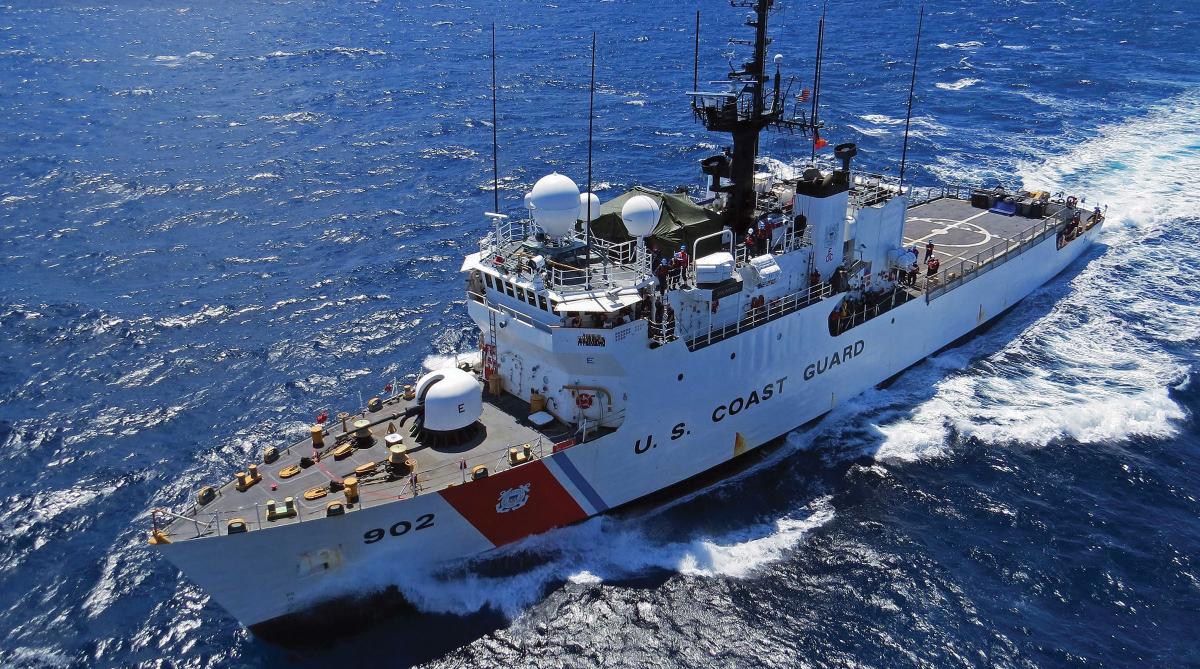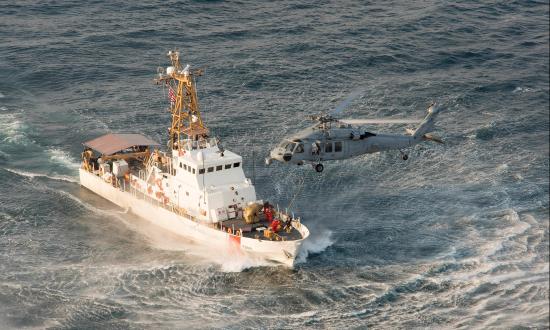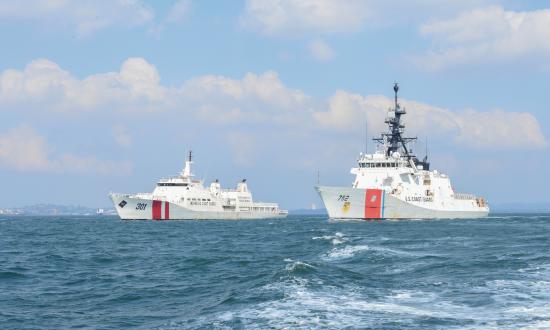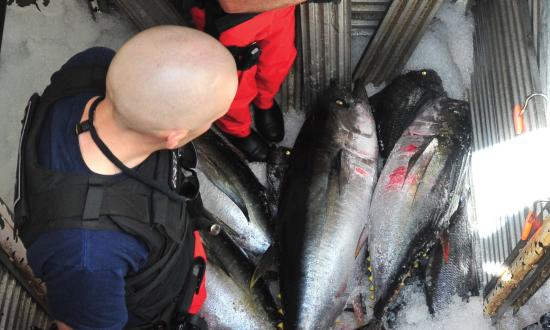The Coast Guard’s Famous-class medium-endurance cutters (WMECs), commissioned between 1983 and 1991, are scheduled to soon begin a service life extension program (SLEP). The Famous-class SLEP is designed to maintain the ships’ reliability and capability until the new offshore patrol cutters (OPCs) are commissioned. The OPCs will first replace the 50-year-old Reliance-class WMECs, then the Famous class.
While the major work planned for the SLEP will increase the ships’ reliability, surprisingly it also will significantly degrade their capability. For example, the highest priority work item is replacing the ship’s service generators and power distribution system. The current prime movers have been obsolete for years, and the switchboards and associated components are likewise becoming more challenging to maintain. This work is critical to ensure the viability of these cutters for the next phase of their lives.
However, the SLEP also plans to remove the Mk 75 gun system and associated Mk 92 fire-control system and replace them with a Mk 38 25-mm gun with no fire-control system. This will eliminate the cutters’ only active antiair missile defense system and significantly decrease antisurface warfare capability. Supporters of this plan generally offer two points: First, these systems are obsolete and have become much more difficult to maintain since the last of the Oliver Hazard Perry–class frigates was decommissioned in 2015. Second, while the capability of individual ships will decrease, the OPCs, which will be coming online while the Famous-class cutters are still in service, will have this capability with their Mk 110 57-mm gun and associated fire-control system, and therefore overall fleet-wide capability will remain the same. These would be valid arguments for removing the obsolete combat systems, but they miss one key point—the Mk 92 is the most sensitive radar on board the WMECs and is frequently used to detect the small, high-speed vessels used to traffic drugs. Counterdrug operations are one of the top missions of the Famous-class cutters and are forecast to remain the priority for the near future. As drug cartels continue to evolve their tactics with the increased use of low-observable vessels—such as low-profile vessels and self-propelled semisubmersibles—the WMECs need the most capable sensors available to combat them.
Sensible Solutions
Several solutions exist that could maintain or improve the capability of these ships and still save scarce resources. First, the Mk 92 could be retained, keeping the same sensor capability the ships have now, even if the Mk 75 is removed. Alternatively, and even more effectively, the Mk 92 could be replaced with one of two radars: the Airbus Multi-Mode Radar (AN/SPS-75 [TRS-3D]) or the AN/SPS-77 Sea Giraffe multirole medium-range 3D surveillance radar. These multimode radars are much more sensitive than the AN/SPS-78 surface-search radar, which would be all that remains if the Mk 92 is removed. In addition, these radars are already on board both variants of the Navy’s littoral combat ships, the AN/SPS-75 is on board the Coast Guard’s national security cutters (NSCs), and the AN/SPS-77 has been selected for installation on board the OPCs.
Therefore, a robust supply and training infrastructure already exists, eliminating one of the most common problems with installing a new system. Further, installing either the AN/SPS-75 or the AN/SPS-77 system on the Famous class will increase the pool of experienced technicians and operators throughout the fleet, many of whom will later serve on board NSCs and OPCs. Finally, installing the AN/SPS-77 could help meet some of the test and evaluation required for the OPC, hastening the timeline for this class to achieve full operational capability and providing valuable lessons for OPC integration into Coast Guard fleet operations.
Critics will cite the lack of funding for the installation and training of a new radar system. However, current SLEP cost estimates fail to account for the significant (and annually recurring) savings provided by eliminating the Coast Guard’s Mk 75 and Mk 92 schools and depot maintenance lines. Even better, the current AN/SPS-75 course is only 26 days, compared with the Mk 92 course, which is 166 days and requires trainees to execute costly permanent changes of station. In addition, the number of gunner’s mates assigned to the Famous class could likely be reduced given the significant reduction in armament complexity and maintenance requirements.
Critics also may argue that the new radar will still require some training. While this is true, the cost will be minimal, especially considering a significant increase in capability for these ships. For example, assuming the same number of technicians currently trained on the Mk 92 would receive training on the new system, only three personnel per ship would be required to attend training. Given a standard tour length of three years, this averages one person per year per ship—a relatively small increase.
Last, but no less important, both the multimode AN/SPS-75 and AN/SPS-77 are air-search radars. This helps Famous-class cutters complete emergency low-visibility approaches to improve air operations safety with embarked helicopters. Further, air-search capability would enable the Famous class to operate unmanned aerial vehicles (UAVs), either organically or to take advantage of an NSC or another UAV-equipped unit operating nearby.
These advantages, coupled with the minimal cost associated with installation and long-term savings, can ensure the Famous class remains a capable asset for counterdrug and other missions for the foreseeable future. Removing this critical sensor with no replacement is a mistake the Coast Guard has not yet made. Hopefully, the service will change course before it does.






